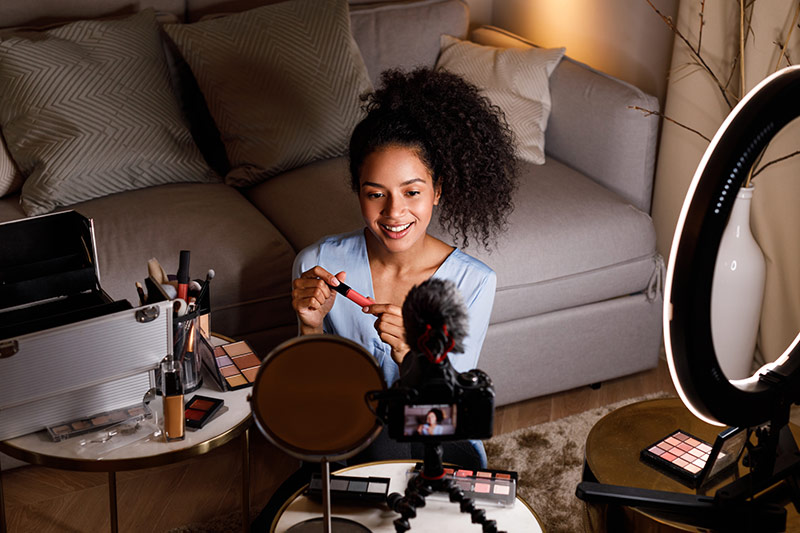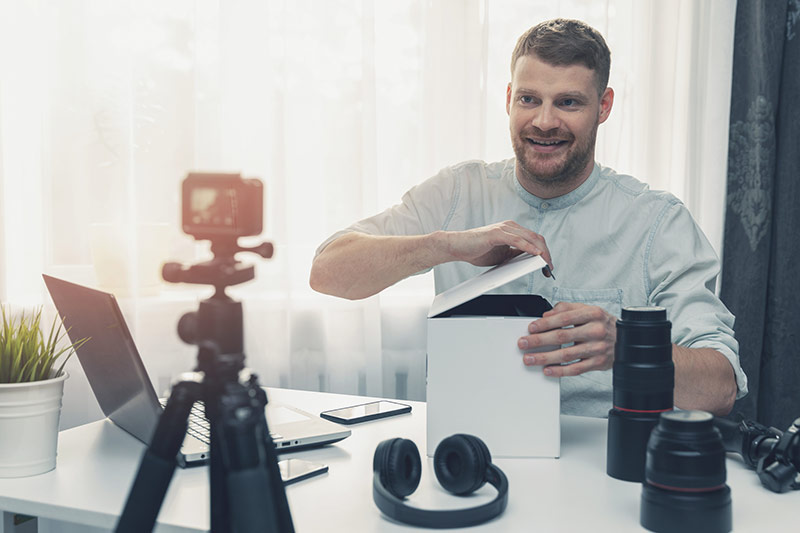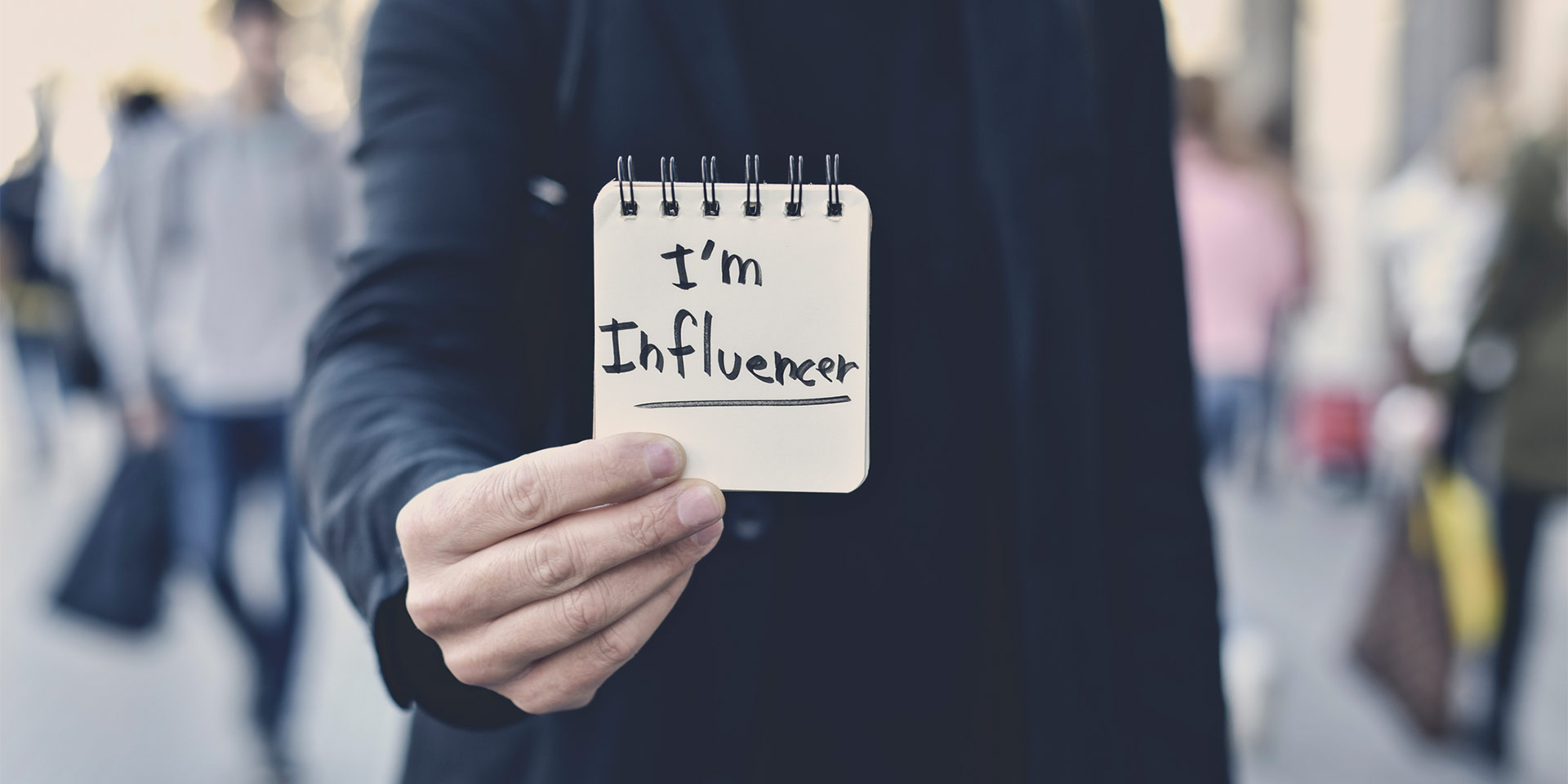“Influencers pay double.” With this message, Joe Nichhi, the owner of a small ice cream business, tried to deter self-proclaimed celebrities who would ask him to give them free ice cream in exchange for “exposure” on their social media platforms. But he succeeded more than that. Nicchi has become an international symbol of disgust with “insta-begging.”
He was already fed up with the weekly suggestions he received from bloggers, Instagram users or curators of an aggregator (those pages that do not create content themselves, but collect and put together content from other pages). However, he felt his patience was exhausted after someone asked him to provide a party of 300 people with free ice cream in exchange for having his business promoted at the event. “They love using the word ‘exposure’,” Nicchi said. “I said, ‘This is crazy’, and that’s when I made the sign.”
The man was photographed holding a square poster—like the photos on Instagram—on which he wrote in block letters, for everyone to see: “Influencers pay double.” And he posted the picture on his company’s profile, with the description: “We’ve decided to make this thing official with signage. We truly don’t care if you’re an ifluencer, or how many followers you have. We will never give you a free ice cream in exchange for a post on your social media page. It’s literally a $4 item…Well, now it’s $8 for you. #InfluencersAreGross.”
Ironically, Nicchi’s campaign against influencers was very successful on social media. His post went viral and gave internet users the opportunity to speak out against the freebie culture (free items or services offered by companies for promotion). “We’re the anti-influencer influencers,” Nicchi joked in an interview with The Guardian. “It’s weird…but I think it’s really fun. I hope it inspires small businesses to hold their own,” the American added. “I’ve been getting a lot of supportive emails since this went viral,” he said in an interview with the BBC. “I think a lot of these influencers are hitting up small businesses for free products in exchange for posts with dubious value.”
Leeching off their parents
Last month, two Instagrammers, Cătălin Onc and Elena Engelhardt, (Romanian and German respectively) gave their own notoriety a negative boost by creating a GoFundMe page (a project aggregator requesting funding), in which they asked internet users for 10,000 euro so they could embark on a bicycle trip around the world. (Their ad actually said they wanted to travel “from Germany to Africa,” not mentioning a specific country in Africa.)
The motivation for the entire trip was very vague according to BuzzFeed: “We could write a long text about mental health or global warming. We could tell you about following your dreams, or how important stepping out of your comfort zone is. We could tell you how beautiful traveling is, and its benefits, or the fact that most news don’t match reality. (…) We will show the beauty of this planet and its inhabitants, but also the ugliness.” The couple also wrote that they wanted “less talking, more action” and promised that “together we can make a difference.”
Their request had managed to raise a few hundred euros when Cătălin published an additional message, in a post that he has since deleted. He said that “some will tell us to get jobs, like everyone else and stop begging. But when you have the impact we do on other’s life, getting a job is not an option. We could model and make fast money, but we don’t want to advertise consumerism. A normal job at this point would be detrimental.”
So far, just a hint of egocentrism, but when the young man went on to say that his mother (who “has not much herself”) was working two jobs to support them and their nomadic lifestyle, the online barriers were broken and angry messages began to flow: “The ugliness you’re showing the world is your narcissism,” someone wrote. “I want to donate to help your poor mother go on vacation instead of you two douchebags,” someone else said.
The story ended completely differently from the couple’s initial plan. One last post on their account was a portrait of Cătălin, with the description: “I am going on a walk. I will walk as long as I possibly can. No sleep, no social media, no distractions. Just me and my brain out there. Time to do some soul work.” “Try walking to a job interview,” said the first comment on the post.

This also happened to another “influencer” who was sent to work. In March, she wrote to a resort in the southern Philippines asking for free accommodation, on account of her fame. White Banana Beach Club Siargao responded on Facebook with a general post: “We would like to let you know that White Banana is not interested in ‘collaborating’ with self-proclaimed ‘influencers’. And we would like to suggest you find another way to drink, eat or sleep for free. Or, why not, actually go to work.”
However, the popularity of reactions such as the one mentioned above only confirms their exceptional character. And, like any exception, they only draw more attention to the fact that there is a rule and that this goes in the opposite direction. The influencers marketing industry doesn’t frown, not even slightly, upon the viralization of the mockery posted by the small ice cream producer.
It has no idea who Cătălin and Elena are and, most likely, it swallowed the post of the Philippine resort a long time ago (which you might not have come to know about if you hadn’t read this article). We are talking about a marketing branch whose value ascribed by TechJury amounts to 10 billion dollars (in 2020) and about billionaires in dollars who gained this status by feeding it with the attention of millions of followers.
Kylie Jenner is the ultimate example. The reality TV star has over 139 million followers on Instagram, 27 million on Twitter and 22 million on Facebook. Last summer, after Forbes announced that Kylie Jenner could become the youngest billionaire, a comedian thought of “helping” her, launching a GoFundMe page meant to raise the 100 million dollars she was short of for getting the title. “This is extremely important,” the comedian wrote, in capital letters, in the page description. Even though opening the page was a joke, he still managed to raise $400 in a matter of hours, Harpers Bazaar wrote.
Influencers and the marketing mix
The success of the social media influence industry is explained by statistics. About 70% of teenagers have more confidence in influencers than traditional celebrities, according to an analysis published by the Digital Marketing Institute. The strength hereof is so great that 4 out of 10 millennials who follow certain social media channels solemnly declare that their favourite influencer understands them better than their friends do. The impact of these statistics has a consistent economic substratum.
BBC analysts have assessed this by documenting information showing that YouTube influencers have changed the way teenagers look. And, if this sounds a bit like science fiction, the statistics that correlate the consumption of YouTube tutorials with the consumption of cosmetics shed light on this showing that the 16-24 age group ranks first when it comes to consumption. Companies know this well.
That is why 57% of fashion and cosmetics manufacturers use influencers as part of their marketing mix, and 21% plan to add them to next year’s budget. This is also because advertisers, who have bombarded us for years with their invasive ads, have found that 40% of Internet users use ad-blocking technologies, which allow them to block unsolicited visual advertising.

The fact that the legislation is struggling to keep up with online ploys is confirmed by the recent efforts of the British Advertising Standards Authority to stem the tide, investigating influencers such as Sophie Hinchliffe, suspected of disguised advertising on Instagram.
“Instagram is almost a walking advertisement”, says Alexia Clincy, executive director at Capitalize Social, referring to the curatorial nature of the posts on the application. “It’s like watching TV with the commercials on. It can be a post of a regular person, who didn’t get paid for anything, yet everything just looks like an ad”.
This is where the real crux of the matter lies. It’s not advertisers, who do everything possible to sell, that end up the lowest, because that’s the reason for their existence. The lowest place is taken up by the people who have sold their communication space with those around them and turned their identity into a motley market, full of rubble.
Shamira Ibrahim assessed the situation well: “In fact, the brand-influencer model has now nearly inverted, with individuals actively marketing themselves as products to brands and PR companies, and using their following and engagement as a barometer for their rates.” In other words, companies sell products, and influencers sell themselves and their audience too, the only ones left to buy both the products and the influencer.
We will get tired of this type of trade someday, because any kind of excess comes at a cost. The question is: Who will still have the money to pay for it, if we all turn into online princes, when in reality we will be mere paupers with internet access?



















